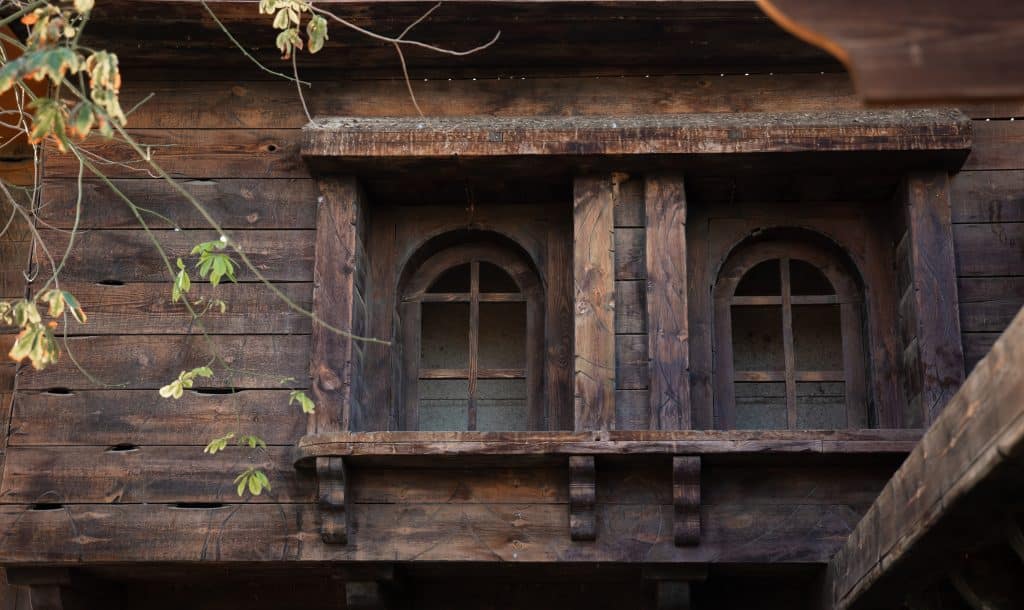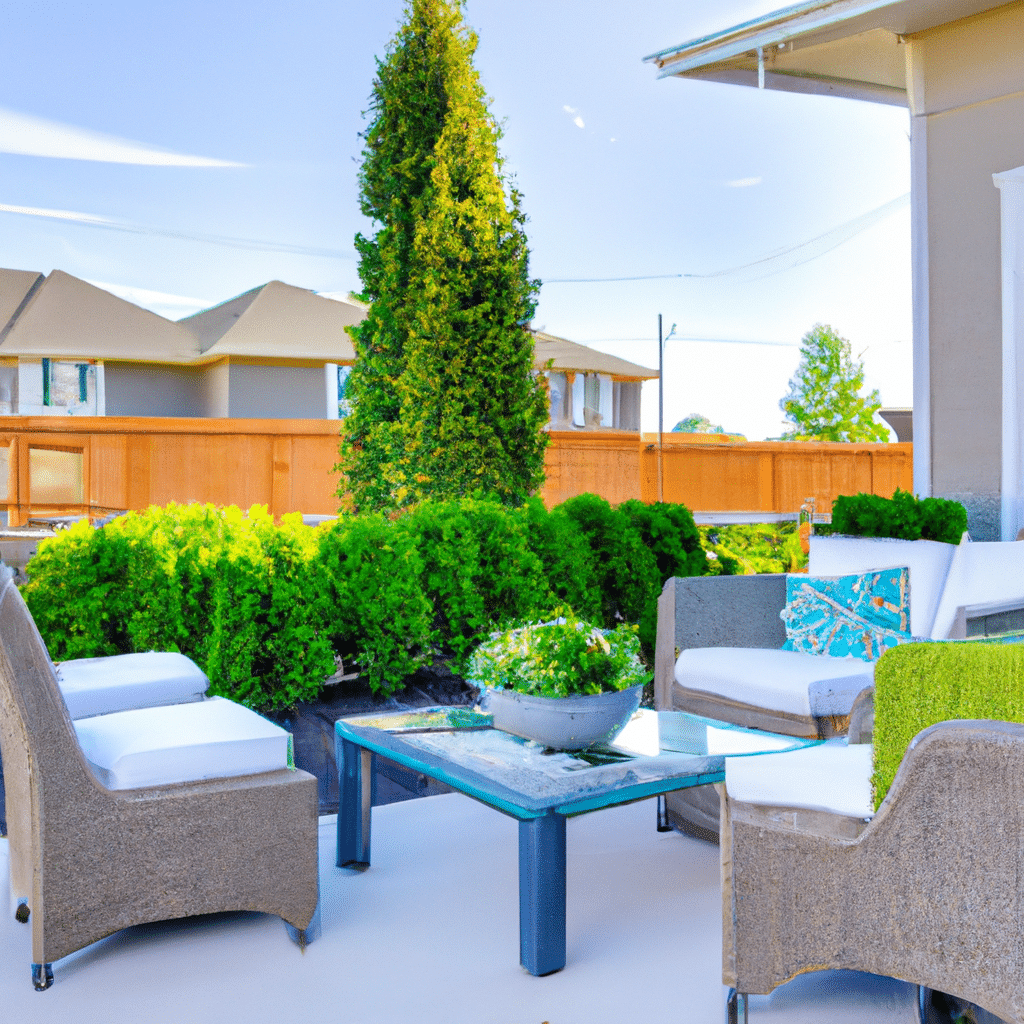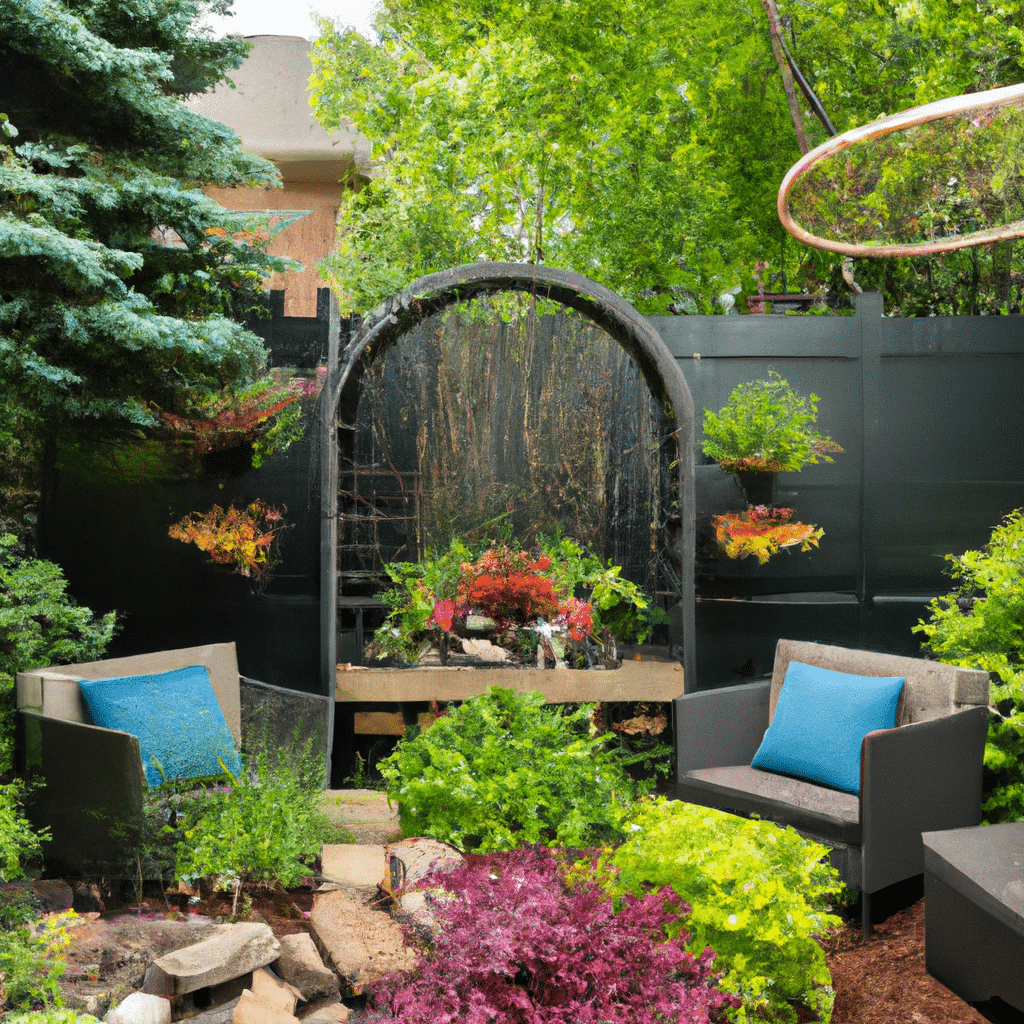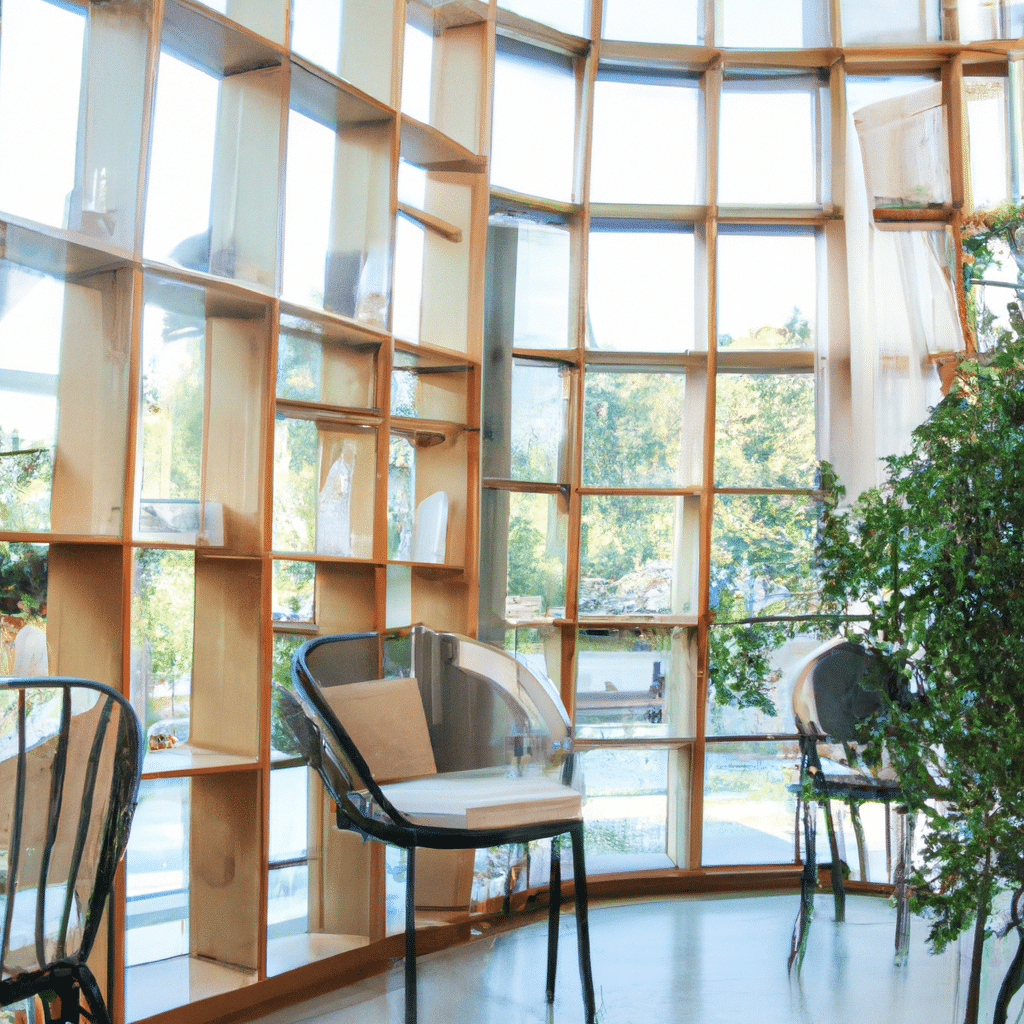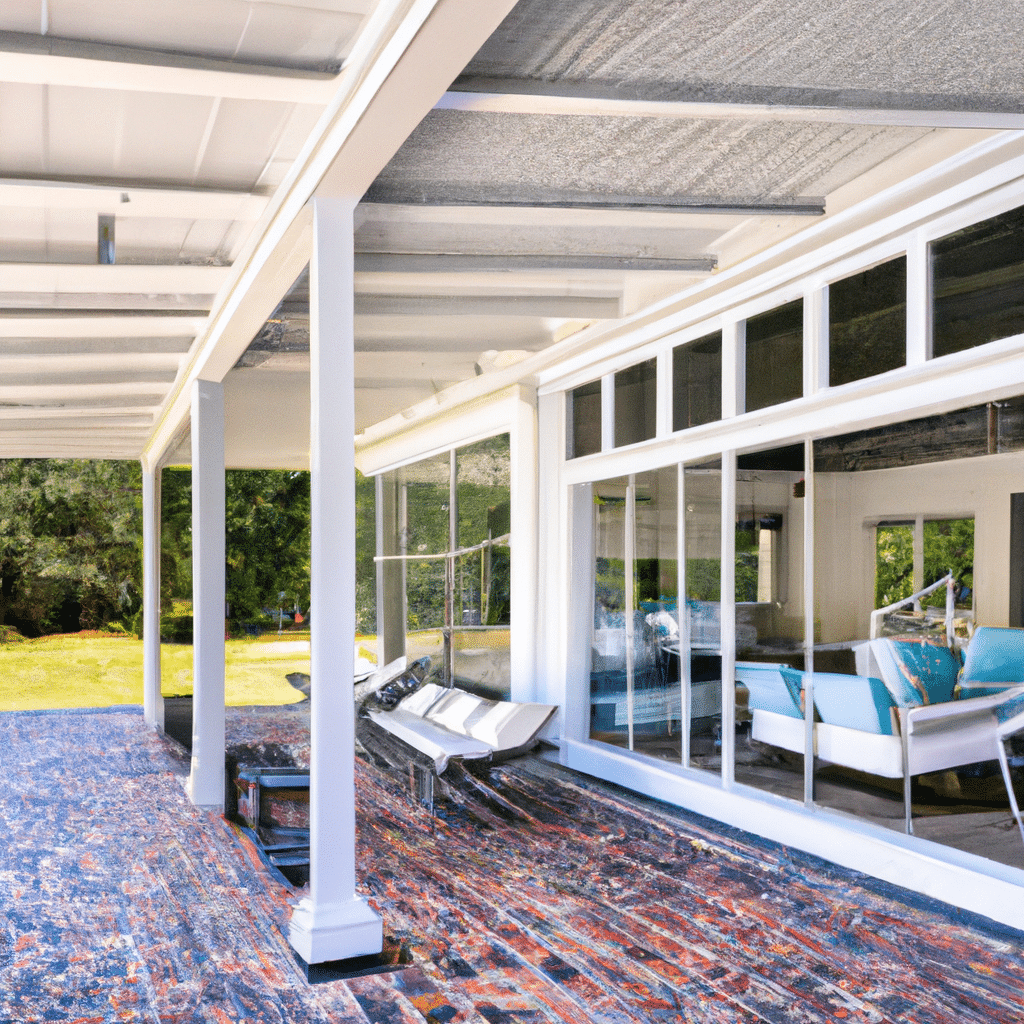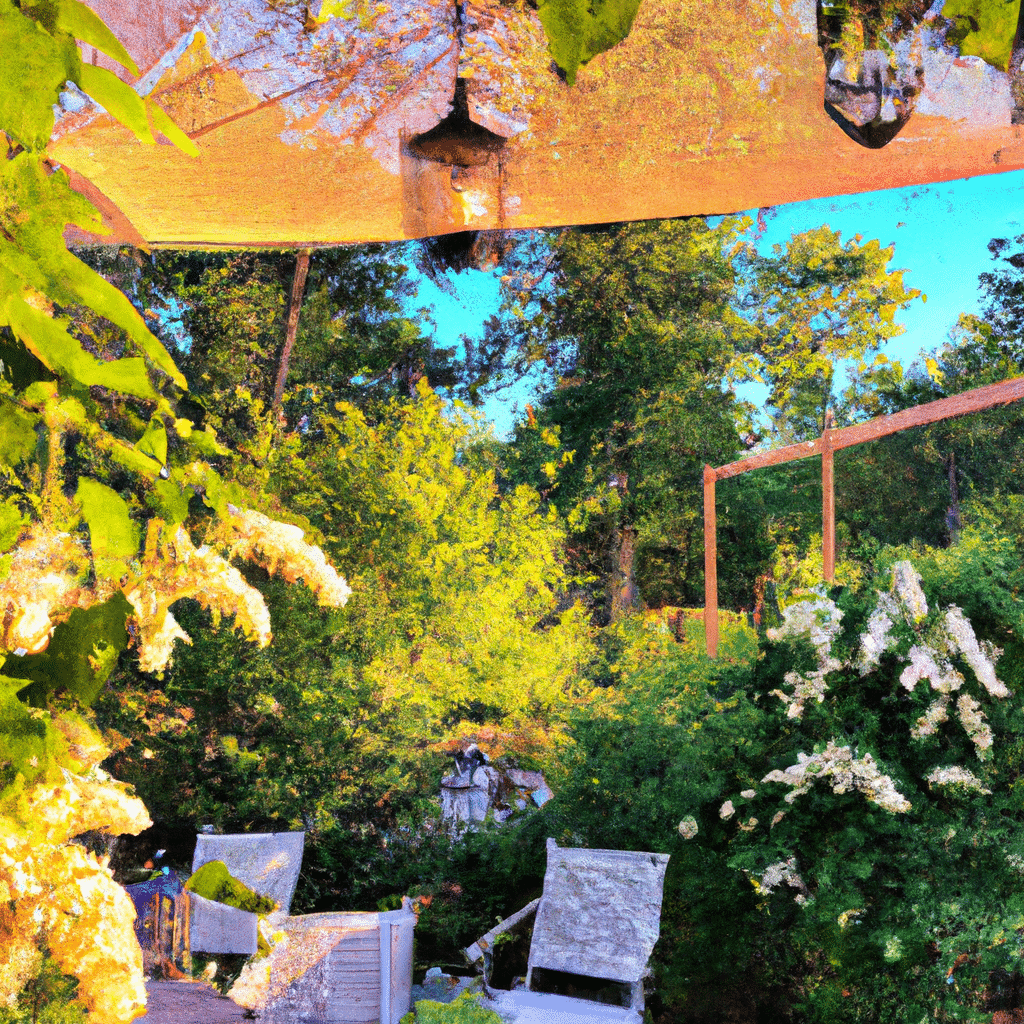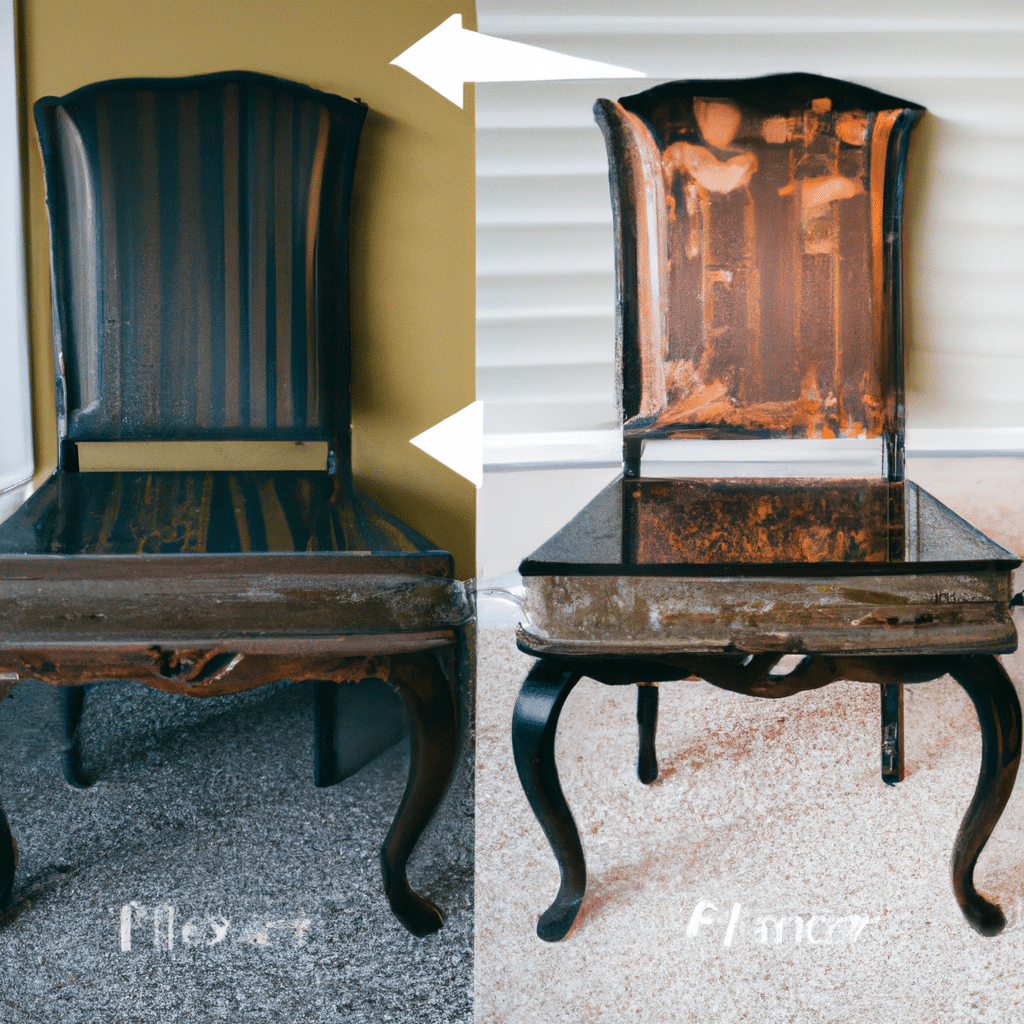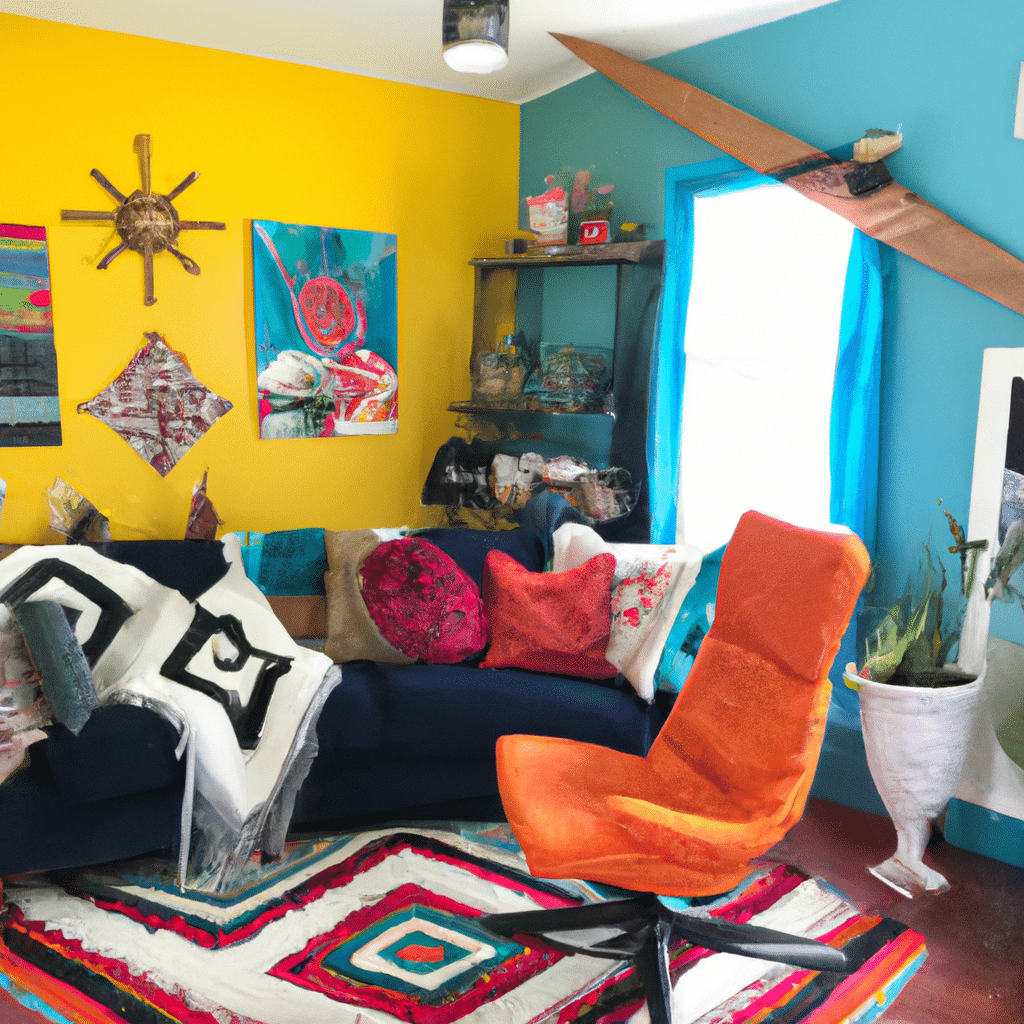Introduction: The Charm of Vintage Spaces
There’s an undeniable charm to vintage homes. From stately Victorian mansions to cozy cottages, these historic spaces offer a glimpse into the architecture and aesthetics of bygone eras. Their distinctive features like high ceilings, ornate moldings, and hardwood floors lend them a warmth and character unmatched by modern construction.
For many homeowners, the appeal of vintage spaces lies in their storied pasts and romantic ambience. They represent a tangible connection to previous generations who once inhabited the same rooms and corridors. However, owning a vintage home comes with a unique set of challenges – especially when it comes to keeping them comfortably heated against the elements.
The Evolution of Home Heating
To understand the heating issues faced in vintage homes, it helps to look at how home heating methods have evolved over time. Up through the 19th century, fireplaces and wood-burning stoves were the predominant heat sources. Hot air circulated through chimneys and passive vents, often leaving homes drafty. The late 1800s saw the rise of early central heating systems like gravity furnaces and steam radiators. But it wasn’t until the 20th century that forced-air heating and insulation became commonplace.
Modern heating systems are engineered for efficiency, comfort and cost-effectiveness. Meanwhile, vintage homes relied on outdated methods and materials that make temperature regulation difficult. Thankfully, we now have a range of clever solutions that merge historical charm with modern warmth.
Why Vintage Homes Pose Heating Challenges
There are several factors that contribute to heating issues in old houses:
- Poor insulation: Most vintage homes were built before insulation was used regularly in walls, attics and basements. This allows heat to easily escape.
- Drafty design: Features like transom windows, high ceilings, and unused chimneys and vents make it hard to retain heat. Air leaks sap warmth from the home.
- Old windows: Traditional single-pane windows offer virtually no insulation. Heat is lost through both the glass and any gaps around the sashes.
- Inefficient systems: Gravity furnaces, steam radiators, and early forced air systems demand a lot of energy to run while delivering uneven heating.
- Piecemeal additions: Renovations over the years may create an inconsistent patchwork of materials and heat sources.
- Climate variations: Homes built before climate control just couldn’t keep up with extreme seasonal shifts in temperature.
The Anatomy of a Vintage Home
To tackle heating challenges, it helps to understand the architecture and layout of old houses:
- Layout – Vintage homes often have compartmentalized floorplans with small rooms versus open concepts. This can impede air flow and heat circulation.
- Walls – Plaster and lath walls were common in old homes. Plaster is prone to cracking over time which allows heat loss through walls.
- Windows – Multi-pane sash windows were typical in vintage homes. The small panes and wooden sashes are inefficient insulators.
- Doors – Solid wood doors found in old homes are often warped or feature gaps along edges, causing drafts.
- Chimneys – Large chimneys act as giant flues allowing warm air to escape even when not in use.
- Attics – Unfinished attics and lack of attic insulation result in substantial heat loss through the roof.
- Basements – Uninsulated cinderblock basements develop dampness and chill that permeates the home.
Historical Heating Methods: A Look Back
Understanding historical heating methods provides context on why many vintage homes suffer from comfort issues:
Fireplaces
Once the main heat source, fireplaces are incredibly inefficient – they pull heated air out of the home through the chimney. Only areas directly near the fire feel warm.
Uninsulated Forced Air Furnaces
Early 20th century forced air furnaces relied on burning coal or wood without distribution ducts, resulting in uneven heating.
Steam and Hot Water Radiators
Steam radiators of the late 1800s delivered heat through a series of pipes, but individual room control was difficult.
Gravity Furnaces
These furnaces relied on natural convection, so second floors were often left chilly due to lack of air circulation.
Space Heaters
Free-standing space heaters only heat small areas immediately surrounding them, leaving much of the home cold.
The Modern Heating Landscape
Thankfully, homes today have access to a variety of heating systems that are safer, cleaner, more energy-efficient and adaptable to all spaces:
- Forced air furnaces with ductwork distributing warmth evenly
- Hydronic systems of circulating hot water or steam
- Electric radiant floor heating for consistent comfort
- Ductless heat pumps for flexible room-by-room control
- High-efficiency wood stoves and fireplace inserts
- Geothermal systems tapping the earth’s stable temperature
- Solar thermal solutions using renewable energy
Vintage homes can benefit from these modern technologies paired with weatherization techniques like air sealing and insulation. This combination of old and new enhances efficiency while preserving your home’s historic spirit.
Assessing Your Vintage Home’s Heating Needs
When planning heating improvements for a vintage home, there are a few key factors to consider:
Climate – Assess your climate zone and typical seasonal temperatures. Colder regions need more robust heating systems.
Home Layout – Evaluate the floorplan, taking note of room sizes and ceiling heights. Areas like vaulted ceilings can be tricky to heat.
Problem Zones – Identify parts of your home that get insufficient heat, like north facing rooms. These areas will likely need supplemental heating solutions.
Use of Space – Consider how each space is used, including high traffic areas that require consistent heating. Bedrooms may need extra warmth at night.
Existing Systems – Determine the age, type and condition of your current system. Assess its effectiveness in heating your home.
Efficiency Goals – Factor in your goals for energy efficiency and cost savings. Some systems are greener than others.
Budget – Estimate your budget for upgrades. Balance costs against long-term energy savings to find the ideal system for your needs and finances.
The Importance of Insulation in Older Homes
Before exploring specific heating systems, it’s wise to upgrade insulation throughout your vintage home. Insulation acts as a barrier to prevent conditioned air from escaping out and external cold air from infiltrating in.
Old homes often suffer from missing or inadequate insulation in areas like:
- Attics – Heat rises and escapes through poorly insulated attics. Adding insulation reduces this major source of heat loss.
- Walls – Insulating walls helps prevent drafts from penetrating exterior walls and making rooms feel chilly. Injecting insulation into wall cavities can make a dramatic difference.
- Basements and crawl spaces – Uninsulated floors allow warmth to radiate into basements. Insulating floors retains warmth in living spaces.
- Ductwork – Insulated ducts prevent cooled or heated air from being sapped as it flows through ductwork.
- Windows – Window insulation kits provide an added layer of insulation and weatherstripping to reduce drafts around windows.
Combined with air sealing fixes like caulking cracks and gaps, insulation helps vintage homes retain heat far more effectively, providing the foundation for an efficient, comfort-oriented heating strategy.
Drafts and Leaks: Common Culprits in Vintage Spaces
Even in a well-insulated home, drafts can undermine temperature regulation. Heat inevitably finds paths of least resistance to escape outside. Here are some of the top places where pesky air leaks crop up in old homes:
- Fireplaces – When not in use, fireplaces can let out significant heat through the flue. Close the flue tightly when not using the fireplace.
- Attic access doors – Insulate doors and ensure they seal tightly closed rather than leaking from the attic.
- Dropped ceilings/soffits – Gaps around soffits, dropped ceilings, or pocket doors can funnel warm air into hidden voids. Caulk and seal these crevices.
- Electrical outlets – Cold outdoor air can sneak through outlets on exterior walls. Insert insulation behind outlet covers.
- Baseboards and moldings – Gaps around trim allow air leakage. Use caulk to fill spaces between baseboards, crown moldings, and door frames.
- Windows – Cold air filters in around old wavy glass and ill-fitting sashes. Tackle this with caulk, weatherstripping and plastic film.
- Chimneys – Ensure dampers seal tightly. Block flues on unused chimneys to prevent heat loss.
- Vents – Unused bathroom and kitchen vents, or transom windows over doors can also contribute to drafts. Close them off and insulate around vents.
Radiators: A Nod to the Past
If your vintage home still relies on old cast iron radiators for heat, all is not lost. Radiators can be upgraded with a few modifications:
- Modern valves – Replace obsolete valves with modern thermostatic or pressure valves for greater control over each radiator.
- Vents – Install air vents at the end of each radiator to allow trapped air to escape so hot water can efficiently radiate heat.
- Insulating reflective foil – Line the wall behind radiators with foil sheets that direct heat into the room rather than wasting it heating the wall.
- High-efficiency boiler – An aging, inefficient boiler can be upgraded to a modern high-efficiency boiler to maximize the system’s output while saving on energy bills.
- Bleed valves – Allow trapped air to escape and ensure an evenly heated home.
While radiators lack zoning control, a few enhancements can coax improved performance from these heating relics. But for optimal comfort, upgrading the entire systems is recommended.
Modern Radiators: Blending Style and Efficiency
Radiators aren’t just vintage objects – modern radiators can be a stylish and versatile heating option worth considering:
Hydronic radiant floor heating integrates radiant tubing into floors or walls, using water warmed by a high-efficiency boiler or water heater. It provides even, soothing warmth.
Electric radiant heating utilizes thin electric cables or mats embedded in floors or ceilings coupled with smart thermostats. Also offers uniform heat distribution.
Cast iron radiators are still available today with sleek, streamlined designs appropriate for renovations. Enjoy consistent heat diffusion and style.
Decorative tube or column radiators bring a contemporary minimalist feel with their stainless steel or aluminum aesthetics. They efficiently conduct and radiate warmth.
When integrated with smart controls, zone valves and thermostatically-controlled valves, modern radiator systems provide appealing form and outstanding function.
Underfloor Heating: A Hidden Gem
An often overlooked option, underfloor heating can be a game changer for enhancing comfort in drafty vintage spaces. Running pipes or heating cables under the floor allows warmth to gently radiate upward. It offers some great benefits:
- Even distribution – Heat from a large surface area keeps temperatures steady compared to spot heating from radiators.
- Allergy relief – Radiant floors eliminate dust swirling in forced air systems.
- Comfort – Feet stay cozy! No cold floors or drafts.
- Invisible integration – Systems install out of sight under flooring materials with zero clutter.
- Versatility – Works well with tile, wood or carpet flooring.
- Efficiency – Only heats occupied spaces, lowering energy usage.
Underfloor heating works beautifully in renovated vintage homes when combined with smart thermostats and insulation for maximum efficiency and comfort.
Electric vs. Hydronic Underfloor Heating
Underfloor heating systems come in two main varieties – electric and hydronic:
Electric
- Runs on electricity
- Embedded wires heat through resistance
- Less expensive upfront costs
- Simpler DIY installation
- Individual room control
Hydronic
- Runs on hot water, like radiators
- Pipes heat via convection
- Higher upfront costs
- More complex installation
- Boiler provides whole house heating
- Can tie into existing boiler system
Hydronic systems require more planning but can heat domestic water too. Electric systems offer plug-and-play simplicity for zone heating. Both enhance vintage homes with cozy underfoot warmth!
The Rise of Smart Thermostats
An inexpensive upgrade that makes a huge impact is swapping outdated thermostats for user-friendly smart thermostats like those offered by Nest, Ecobee, and Honeywell.
Smart thermostats offer convenience and efficiency:
- Intuitive mobile apps allow remote temperature adjustments
- Usage patterns are analyzed to optimize heating schedules
- Geofencing senses when residents leave home, automatically minimizing heating
- Voice control options through virtual assistants
- Smart notifications alert homeowners to issues
Best of all, choosing a model with sensors lets you customize temperatures room-by-room – a smart upgrade for any home.
Zonal Heating: Maximizing Efficiency
Zonal heating divides a home into separate temperature controlled zones. This allows you to only heat rooms that are occupied, saving energy and costs. Options for adding zonal capabilities include:
Smart thermostats capable of managing multiple zones. A smart thermostat in each zone enables customization.
In-floor electric heating zones controlled by individual thermostats use energy only where needed.
Mini-split systems facilitate zoning by cooling or heating one area without affecting others.
Radiant panels mounted on walls or ceilings provide heat to specific zones and can tie into smart controls.
Motorized valves manage water flow to radiators or baseboards on a room-by-room basis.
With smart zoning, vintage homes can retain their charm while enjoying modern heating precision.
Heat Pumps: An Eco-Friendly Solution
Heat pumps are one of the most efficient heating (and cooling) systems available today. Rather than burning fuels to generate heat, heat pumps move existing heat between spaces:
- Air-source heat pumps transfer heat between outdoor and indoor air
- Ductless mini-split heat pumps regulate room-by-room temperatures
- Geothermal heat pumps leverage the Earth’s constant subsurface temperature
Because they don’t generate heat through combustion, heat pumps cut energy usage, costs, and emissions – making them a smart green option for environmentally-conscious homeowners.
Ductless mini-split heat pumps are especially beneficial for adding customizable heating to drafty rooms in vintage homes. Their flexible zoning abilities and whisper-quiet operation make heat pumps an ideal retrofit.
The Role of Fireplaces in Vintage Homes
Nothing beats gathering around a cozy fire on a cold winter night. But as an everyday heat source, traditional open-face fireplaces are woefully inadequate and inefficient for heating needs. Still, fireplaces can serve as an alluring and nostalgic supplemental heat source if upgraded properly.
Options for enhancing fireplace efficiency include:
- Glass doors to contain heat flow
- Fireplace inserts to maximize heat output
- Reflective panels behind fireboxes directing heat inward
- Outside air intakes reducing heat loss through the chimney
- Chimney balloons inflatable blocks preventing drafts when not in use
Upgraded wood stoves also utilize fireplaces as heating tools much more effectively than open fires. Fireplaces may not perfectly heat vintage homes, but simple upgrades transform them into worthy additions to a cozy heating strategy.
Modern Fireplace Inserts: Efficiency Meets Aesthetics
For vintage homes with existing fireplaces, a fireplace insert serves as an easy upgrade for amplified efficiency and heat output. Inserts are boxes lined with reflective metal that stands inside the brick firebox.
Benefits of fireplace inserts:
- Increased efficiency – Inserts prevent heat escaping up the chimney by circulating air back into the room. Some feature built-in blowers to boost heat transfer efficiency up to 80%.
- Reduced emissions – By burning fuel more efficiently, smoke output and emissions are decreased.
- Enhanced safety – Inserts run cooler with less risk of sparks escaping the fire chamber.
- Ambiance – While efficient, inserts maintain the comfort and aesthetics of a real wood fire.
- Zoning – Direct fireplace warmth effectively heats the immediate area.
For vintage hearths needing an upgrade, fireplace inserts check all the boxes for boosting efficiency, safety and coziness.
Ductless Mini-Splits: Flexible and Efficient
Ductless mini-split heat pumps are a ductless, zonal heating and cooling solution ideal for retrofitting vintage homes.
Here’s how mini-split systems work:
- An outdoor compressor connects to one or more discreet indoor wall or ceiling units installed in different rooms.
- Refrigerant tubes run between the outdoor and indoor units.
- Heat pumps move heat between the interior and exterior units, providing targeted heating or cooling.
Key benefits of mini-split systems:
- Zone control – Each room gets its own thermostat for customized temperatures.
- Efficiency – Only rooms in use get heated or cooled.
- Discreet installation – The wall-mounted indoor units have a low profile.
- Versatility – Mini-splits can handle both heating and air conditioning needs.
- Quiet operation – The systems run very quietly.
For tricky-to-heat vintage homes, ductless mini-splits are an efficient and flexible heating option.
The Benefits of Ceiling Fans in Heating
Believe it or not, ceiling fans aren’t just for cooling! They can actually help circulate heat in vintage drafty spaces. Hot air naturally rises and tends to get trapped near ceilings while leaving floors chilly. Ceiling fans push down and circulate that trapped warmth.
Here’s how ceiling fans create a heating advantage:
- They continuously move warm air off the ceiling, pushing it downwards into occupied areas. Rising heat gets redistributed.
- The movement makes rooms feel warmer than they actually are, so thermostats can be lowered a degree or two.
- Fans eliminate hot and cold spots by blending warm and cool air pockets.
- Air circulation helps combat humidity which improves comfort levels.
- The heat from other sources like fireplaces or space heaters gets better distributed throughout rooms.
- Fans allow heated air to adequately reach rooms with cathedral or high ceilings.
Reversing the ceiling fan blade direction is key – clockwise in winter, and counterclockwise in summer. With this simple switch, fans transition into effective heating helpers all winter long!
Solar Heating Solutions for the Vintage Home
For environmentally-conscious homeowners, renewable solar energy offers a sustainable path to heat vintage spaces:
Passive solar design takes advantage of south-facing windows for direct heat gain during winter days. Strategic landscaping provides natural shading in summer.
Active solar systems use panels to collect solar energy. This heat gets transferred to water which circulates through radiant floor systems or heat exchangers providing on-demand warmth whenever the sun shines.
Solar air collectors absorb heat using dark-colored metal panels. Fans transfer absorbed warmth either directly to indoor air or to storage units for later use.
Photovoltaic (PV) systems convert sunlight into electricity to power heating and cooling systems. They can also heat water.
With solar solutions, your vintage home can be warmed by the power of the sun! Work with solar specialists to design an appropriate system.
Geothermal Heating: Tapping into Earth’s Warmth
Geothermal heating (and cooling) leverages the ground’s constant temperatures to provide vastly more efficient heating and cooling. While air temperatures fluctuate, the Earth’s subsurface stays around a steady 55-70°F year-round. Geothermal systems use a ground loop piping system buried underground to harness this stable warmth in winter.
Open loop systems draw and discharge water from an underground aquifer using a well system.
Closed loop systems recirculate an antifreeze solution through pipes buried vertically or horizontally underground.
The fluid circulating through the ground loop pipes transfers warmth indoors via a heat exchanger connected to the home’s ductwork or hydronic heating system.
Geothermal advantages:
- Extreme efficiency with minimal energy expenditure
- Provides both heating and cooling
- Clean, quiet, low maintenance operation
- May qualify for tax credits and rebates
Tapping into the ground’s constant warmth is an unbeatable heating strategy for eco-minded vintage homeowners.
Boiler Upgrades: Enhancing the Old with the New
Many vintage homes still rely on old, inefficient boilers to generate hot water or steam to feed radiators or baseboard convectors. Upgrading to a new high-efficiency boiler can make home heating vastly more cost-effective.
Consider replacing boilers older than 50 years. Newer models offer:
- Energy efficiency – High-efficiency boilers extract more heat using less fuel. Look for an AFUE rating exceeding 90%.
- Precise temperature control – Advanced electronics and modulating burners allow tighter regulation of water temperature.
- Quiet operation – New boilers no longer hiss and bang like outdated models.
- Compact size – A smaller footprint allows installation even in tight vintage spaces.
- Safety features – Flame sensors and smoke detectors add protection.
- Warranties – Look for at least a 10-year warranty on new boilers.
Pairing a new boiler with new thermostatic radiator valves gives you comfort and savings – an easy win for old home heating woes.
The Role of Windows in Heat Retention
Given that windows offer the weakest insulation in vintage homes, addressing them is key to reducing drafts and retaining heat. Old single-pane windows with loose sashes and worn glazing allow heat to freely escape.
Here are economical solutions for boosting window efficiency:
- Caulk and weatherstrip around all window sashes and casings to seal air leaks
- Install clear window film to add an extra layer of glazing for better insulation
- Use insulating cellular shades with sealed sides to cut drafts and add an insulating air pocket
- Close window coverings like drapes, curtains, and blinds at night for an added thermal barrier
- Apply window insulation kits that seal and shrinkwrap windows with plastic film
- Upgrade to double paned windows for optimal insulation, thermal performance, and comfort
Sealing heat leaks around windows goes a long way toward preventing precious warmth from escaping vintage spaces.
Energy-Efficient Window Upgrades
Replacing drafty old windows with new energy-efficient models is a prime way to improve heating efficiency. New windows prevent far more heat loss.
When choosing replacement windows, look for:
- Double or triple pane glass with thermal coatings and gas fills like argon for insulation
- Multilayered low-e coatings that reduce heat flow through the glass
- Insulated frames made from vinyl, composite, fiberglass, or wood versus metal
- Weatherstripping around sashes to block air infiltration
- Low air leakage ratings of 0.3 cfm or less
- U-factors under 0.30 indicate minimal heat conduction
- National Fenestration Rating Council (NFRC) ratings that allow comparison of window efficiency
Upgrading old windows is a major investment, but the long-term energy savings and comfort dividends make it worthwhile for vintage homes.
Curtains and Blinds: More Than Just Decor
Well-chosen window furnishings like curtains, drapes, blinds, and shutters serve a valuable purpose beyond just decor in vintage homes. These window treatments provide an extra layer of insulation against drafts.
Here are tips for choosing the best window accessories for heat retention:
- Blackout curtains in thick, multilayered fabrics prevent heat loss through windows at night
- Insulated curtains with thermally lined backings add insulating value while still allowing in light
- Thermal drapes should be floor length and overlap walls on either side of the window by at least six inches to minimize air leaks
- Honeycomb blinds trap air in their cellular structure to slow heat transfer
- Shutters create an insulating air gap between the window and the shutter
- Gasketed edges on curtains and shades block drafts and form an air pocket
- Proper installation with sealed edges maximizes energy efficiency
Properly chosen window treatments make beautiful additions while also providing energy-saving insulation.
The Importance of Ventilation in Heating
While sealing air leaks is crucial, sufficient ventilation remains important in vintage homes to maintain indoor air quality. Stale, humidity, and pollution buildup can occur in homes that are too tightly sealed.
Integrating ventilation into your vintage home heating strategy keeps air lightly circulating without sacrificing energy efficiency. Recommended techniques include:
- Passive ventilation through trickle vents, louver windows, or transom windows opens above windows or interior doors. These constantly allow small amounts of fresh air to circulate while eliminating drafts.
- Ceiling fans lightly stir the air and can be paired with operable windows for periodically increased ventilation.
- Ducted ERV/HRV systems actively ventilate by exchanging indoor stale air with filtered fresh air from outside. Heat recovery versions recapture heating and cooling energy from the exchanged air.
- Bathroom/kitchen vent fans strategically vent moisture and pollutants from interior rooms to the outside. Use timer switches or humidity sensors so fans don’t run excessively.
- Periodic window ventilation provides occasional boosts of fresh air.
With smart controlled ventilation, vintage homes stay fresh without sacrificing cozy warmth or energy efficiency.
Retrofitting Vintage Homes: Challenges and Solutions
While retrofitting vintage spaces with modern heating brings big benefits, it also poses some unique challenges requiring creative solutions:
Challenge: Hard-to-heat open floor plans
Solution: Strategic mini-splits, electric radiators or baseboards for zone control
Challenge: Limited ductwork capacity
Solution: Mini-splits, radiant systems, or ductless multi-head units
Challenge: Preserving aesthetics
Solution: Wall-mounted mini-splits, baseboard heaters, in-floor systems to avoid visible ductwork
Challenge: Accessing wiring and pipes
Solution: Careful analysis of layouts; using wireless controls where possible
Challenge: Working around weak/fragile plaster walls
Solution: Limit wall penetrations and cuts; use lightweight radiators
With smart planning and problem solving, vintage architecture can accommodate retrofits for superior comfort and efficiency. The charm of old homes belies their potential for modern warmth and efficiency.
The Cost Factor: Budgeting for Heating Upgrades
Upgrading home heating systems represents a major investment. Costs vary widely based on factors like:
- House size and existing infrastructure
- Chosen heating systems
- Extent of efficiency upgrades like insulation and air sealing
- Special installation challenges requiring plumbing, electrical or HVAC modifications
- Overall energy efficiency goals
Ballpark costs range from:
- $2,000-$4,000 for basic upgrades like thermostats or boiler replacements
- $5,000-$15,000 for insulation, sealing, new energy-efficient boiler and radiators
- $10,000-$30,000+ for extensive retrofits with new furnace/ductwork, heat pumps or renewable systems
Create a prioritized plan tackling drafts and leaks before replacing major systems. Research utility incentives and tax credits to offset costs. The long-term payoff in comfort and savings makes upgrades a smart investment.
Grants and Incentives for Heating Improvements
Because efficiency upgrades benefit homeowners and the environment, many rebates and tax credits exist to incentivize homeowners to improve home energy efficiency:
- Utility company rebates – Most utility providers offer rebates for installing energy efficient systems like boilers, smart thermostats or insulation
- Energy efficiency tax credits – Federal tax credits up to $500 are available for meeting energy efficiency criteria
- State/local incentives – Many states and municipalities provide incentives, rebates or loans for efficiency improvements
- Manufacturer discounts – Most brands offer additional rebates or discounts for selecting their high-efficiency heating equipment
- Green certification discounts – Improving efficiency to meet green standards like LEED can qualify for discounts on heating equipment and materials.
- Special loan programs – Some banks or states offer special lower-interest loans for energy efficiency projects.
With the range of incentives available, upgrading vintage home heating is more affordable than ever!
DIY Heating Solutions: What Homeowners Can Do
Handy homeowners can tackle some energy-efficient heating fixes and upgrades themselves:
- Installing insulating window film
- Sealing air leaks with caulk and spray foam
- Bleeding radiators and upgrading valves
- Installing smart thermostats
- Adding timers, sweeps, and seals to fireplaces
- Improving ventilation with humidity-controlled bath/kitchen fans
- Tuning up furnaces by replacing filters and cleaning coils
- Installing reflective radiator wall panels
- Upgrading lighting to efficient LED bulbs
- Adding insulation to accessible areas like basements and attics
Safety should be paramount – know when to call in professionals for major work. But embracing the DIY spirit helps maximize savings.
Working with Professionals: Finding the Right Expertise
While small draft-proofing projects are DIY-friendly, taking on major upgrades like replacing heating systems or insulating walls requires calling in the experts. Work with qualified local professionals like:
HVAC contractors to evaluate current systems and recommend new furnaces, boilers, or heat pumps
Plumbers for radiant floor installations, boiler upgrades, or baseboard heaters
Insulation contractors to inject insulation into walls, ceilings and floors
Electricians for hardwiring smart thermostats, installing in-floor heating systems, or upgrading panels to support new equipment
General contractors to oversee large-scale renovations or improvements
Reputable firms have all required licensing and training. Check reviews and referrals before hiring. Get multiple quotes to compare options and pricing.
Safety Considerations in Heating Upgrades
When installing or upgrading heating systems, safety should be the top priority:
- Fire hazards – Materials must meet fire safety codes. Keep combustibles away from heat sources.
- Electrical – Improper wiring can cause fires or electrocution. Employ licensed electricians.
- Gas connections – Faulty installation of gas furnaces or boilers can result in dangerous gas leaks or explosions.
- Asbestos – This toxic material in old insulation must be handled properly by asbestos abatement professionals.
- Lead – Take precautions if old paint or pipes contain lead.
- Combustion safety – Ensure adequate indoor air exchange to ventilate gas appliances. Install CO detectors.
- Permits – Obtain all required building permits and pass inspections.
While enhancements aim to create comfort, never cut corners when it comes to safely installing and operating new heating systems.
Preserving the Aesthetic of Vintage Spaces
A top priority for any vintage home renovation is preserving its unique historic beauty and character. Thankfully, heating upgrades can be implemented discreetly:
- Hide away unsightly mechanics like ductwork, pipes and vents either in basements or partitioned utility closets
- Conserve original woodwork, floors, walls and accents using minimally invasive installation methods
- Select period-appropriate finishes and facades for radiators, vents and thermostats
- Opt for unobtrusive corner-mounted mini-splits versus ceiling cassettes
- Favor hydronic systems and electric or kickspace heaters over visible forced air ducts
- Use proper materials like wood, plaster, stone and metal during restorations
- Add storm windows or interior film to preserve window aesthetics
With careful planning, you can supplement old-world charm with modern efficiency for the best of both worlds.
Case Study: A Victorian Home’s Heating Transformation
Cheryl, a designer, purchased a grand 1890s Victorian home. Unfortunately, its outdated steam radiators and maze of small rooms resulted in uneven, inefficient heating. “Half the house was always freezing while the other half roasted,” she explains.
Working with HVAC contractors, Cheryl transformed the heating. Blown-in cellulose insulation improved the envelope. She added discreet corner mini-splits to allow temperature control of individual rooms without forced air ducts marring the home’s historic beauty. Nest thermostats and hydronic radiant floors were added to even out temperatures.
“I can finally enjoy the Victorian details I love while staying comfortable thanks to the hidden modern heating technology keeping my rooms properly heated and draft-free,” says Cheryl. “Even my power bills have dropped!”
Case Study: Bringing Warmth to a Historic Cottage
James, an architect, tackled heating issues in his 1920s storybook cottage. “It still had the original gravity furnace. Hot air barely reached the second floor while the basement roasted,” he recalls.
He opted for a ductless mini-split system with discrete wall units in problem rooms. Smart thermostats gave him app-based control over temperatures. James also installed a high-efficiency boiler feeding the existing cast iron radiators while sealing drafty windows with weatherstripping and insulation film.
“I can keep the charming personality of my cottage while finally addressing my heating woes,” says James. “Even as an architect familiar with home systems, I learned so much about options tailored for old homes.”
The Environmental Impact of Modern Heating Solutions
Upgrading home heating offers a chance not just to improve comfort but reduce environmental footprints. Many modern systems are significantly greener.
Benefits include:
- Lower greenhouse gas emissions – High-efficiency systems release far less CO2 than outdated furnaces or boilers
- Reduce fossil fuel dependence – Heat pumps and solar power reduce reliance on gas and oil
- Renewable integration – Heating systems can integrate with renewable energy like solar, wind and geothermal
- Pollution reduction – Cleaner systems lower emissions of pollutants like carbon monoxide
- Energy independence – Active solar, geothermal and hybrid systems help homeowners generate their own heat
- Rebates for going green – Environmental upgrades qualify for incentives and tax credits
With eco-friendly technology, vintage homes can stay cozy while treading lightly on the planet,
Sustainable Heating: Best Practices for Vintage Homes
Beyond upgrading equipment, embracing sustainability involves holistic heating strategies:
- Perform an energy audit to identify efficiency opportunities
- Prioritize passive solar design like strategic landscaping and window orientation
- Ensure tight envelope through air sealing and dense insulation
- Install smart thermostats and zone control for waste-free operation
- Size heating systems properly to prevent oversizing inefficiency
- Maintain systems annually for peak performance
- Utilize waste heat from appliances like refrigerators
- Limit energy-intensive electric resistance heating
- Set thermostats conservatively around 68°F – sweaters help!
With a few eco-wise adjustments, vintage homes can achieve enviable energy efficiency and minimal environmental impact.
The Future of Heating in Vintage Spaces
Heating technology will continue evolving, offering ever-more possibilities for vintage homes. Exciting frontiers include:
- Expanded smart home integration – Systems controlled completely by phones and voice commands
- Next-gen heat pump efficiencies – Continued performance improvements through advanced compressors
- Improved insulation materials – Development of affordable vacuum-sealed panels, aerogels and nano-foams
- Smaller equipment – Continued miniaturization of components resulting in less intrusive installations
- Expanded renewable integration – More homes powered by full solar, geothermal and hybrid systems with battery storage
- Wearable thermostats – Control based on personalized comfort preferences
- Artificial intelligence – Heating schedules and settings optimized automatically based on learned usage patterns
- Distributed smart grids – Neighborhoods sharing locally generated renewable power
While embracing beloved design elements of the past, homeowners can look forward to heating their vintage spaces using the most innovative technology the future offers.
Smart Home Integration: The Next Frontier
The smart home revolution is transforming vintage homes through automation and app control. Managing heating through smart hubs allows unprecedented convenience and efficiency.
Smart home heating integration enables:
- Remote temperature adjustments from phones and voice assistants
- Automating schedules around homeowner habits for waste-free operation
- Real-time performance insights and troubleshooting through advanced analytics
- Over-the-air software updates that continuously improve functionality
- Integration with other smart systems like security cameras, door locks and lighting
- Complete hands-free voice command of all heating functions
Smart home technology allows homeowners to have the cozy vintage homes they love with no compromises on comfort, efficiency or convenience.
Maintenance Tips for Modern Heating Systems
Upgrading heating systems is only half the battle – regular maintenance keeps them operating efficiently for years:
- Replace air filters monthly in forced air systems
- Annual professional tune-ups inspect components and calibrate operation
- Flush and treat water in hydronic systems to prevent corrosion
- Occasionally bleed radiators and check boiler pressure gauges
- Clear debris from heat pumps and check refrigerant levels
- Clean intake pathways of all systems before winter
- Log runtime hours and watch for unusual fluctuations
- Test and reset safety switches like high limit switches
- Clean fan blades and motors in furnaces and air handlers
With proper maintenance, modern systems in vintage homes hum along smoothly all winter long!
Common Heating Myths Debunked
There are many misconceptions about heating older homes. Let’s dispel some myths:
Myth: Older homes can’t be well insulated
Fact: Injecting insulation in walls and strategic air sealing make dramatic differences.
Myth: Radiant heat works poorly with wood floors
Fact: Radiant heating paired with thermostats is safe for all floor types.
Myth: Forced air heating requires extensive ductwork
Fact: Mini-splits and multi-heads cool and heat without ducts.
Myth: You either keep old systems or gut everything
Fact: Numerous options exist for improving efficiency while retaining vintage systems where practical.
Myth: Fireplaces heat better than modern systems
Fact: Inefficient fireplaces waste over 80% of heat. Upgraded wood stoves or inserts perform far better.
Myth: Old homes have no hope of being energy efficient
Fact: Simple strategies like sealing gaps and adding insulation create air tight envelopes rivaling new construction.
Don’t believe common myths! Old homes can absolutely achieve modern levels of efficiency and comfort.
The Role of Decor in Enhancing Warmth
While improvements target technical aspects like insulation and equipment, decor also contributes enormously to making spaces feel warm, cozy and bright.
Consider how decor creates welcoming ambiance:
- Rich fabrics like velvet, fleece and wool used in upholstery, rugs and curtains insulate while appearing extra warm and plush
- Natural textural elements such as wood, leather, stone, clay and rustic baskets add depth
- Layering textures like throws over furniture or sheepskins on floors makes rooms feel more enveloping
- Warm color palettes with reds, oranges and yellows are psychologically warming
- Soft, indirect lighting avoids cold overhead glare
- Candles add flicker ambiance to combat gloom on dark days
- Cozy furniture arranged conversationally creates welcoming spaces
Beyond the mechanics of heating, thoughtful cozy decor encourages relaxation in charming vintage interiors.
Rugs and Carpets: Insulation from the Ground Up
Don’t underestimate how significantly rugs and wall-to-wall carpeting can enhance warmth in vintage homes. Rugs essentially act as insulation for floors – they add cushioning and trap warmth rising from below.
Strategically layering rugs:
- Provides extra insulation against cold underlying floors
- Makes floors more comfortable underfoot
- Allows warmer placement only where needed versus entire floors
- Cuts drafts if air leaks up between floorboards
- Suits vintage homes by protecting beautiful old floors
- Provides flexibility to reposition rugs based on furniture layouts
- Wide array of style options from antique carpets to modern shags
Rugs make smart additions for bolstering warmth in drafty old homes. Be sure to use breathable, natural fibers.
The Psychological Impact of a Warm Home
Beyond tangible benefits like efficiency and comfort, home warmth also profoundly impacts mood and well-being. The psychological effects of a cozy environment include:
- Reduced stress – Warm tranquil spaces lower blood pressure and cortisol. Home feels like a sanctuary.
- Improved sleep – Being able to maintain ideal sleeping temperatures results in better rest.
- Bolstered mental health – Comfortable spaces encourage relaxation and lower seasonal depression.
- Increased productivity – Warm rooms support focused work free of distractions like discomfort.
- Family bonds – Shared comfort and coziness draw families closer together.
- Social connections – Guests linger longer and conversations flow easier in welcoming warm rooms.
The mental and emotional benefits of comfortable heating demonstrate that this aspect of homes should never be neglected.
Feedback from Homeowners: Real-life Experiences
Upgrading home heating elicits some common refrains from vintage homeowners:
“I can’t believe I waited this long!”
“I was hesitant about altering the home’s original systems, but the improvements are phenomenal.”
“My energy bills have practically been cut in half now!”
“My home feels like it belongs in this century for the first time!”
“I never realized how much heat I was losing through outdated windows and old insulation.”
“Being able to customize each room’s temperature is a total game changer.”
“The ability to control my home’s temperature remotely gives me peace of mind.”
“Seeing my home maintain steady comfortable temps for the first time is wonderful.”
“I should have done this years ago – best home investment ever!”
The Intersection of Comfort, Efficiency, and Style
Upgrading home heating involves finding the sweet spot between three priorities – comfort, efficiency, and maintaining vintage architectural integrity.
It may require some thoughtful compromises:
- Sacrificing some absolute efficiency goals to preserve original plaster walls or woodwork
- Finding energy-efficient systems able to integrate discreetly without damaging aesthetics
- Opting for radiators or gravity systems where ductwork would damage historic fabric
- Choosing sustainable temperature setbacks and smart schedules to moderate usage
- Prioritizing repairs to the building envelope through insulation and sealing before equipment upgrades
- Working with specialists experienced in improving old homes versus conventional contractors
With ingenuity and problem-solving, you can craft an optimal warming solution honoring a home’s past while upgrading its future.
Heating Solutions for Unique Vintage Architectures
Certain architectural styles and layouts pose distinct heating challenges requiring tailored solutions:
Victorians – Radiators or discreet mini-splits help navigate intricate floorplans without forced air
Cottages – Smaller rooms benefit from zone control through smart thermostats
Farmhouses – Radiant floors or baseboards work well with open floorplans
Denver squares – Mini-splits and wall heaters accommodate irregular ranch layouts
Log cabins – High-efficiency wood stoves balance rustic aesthetics with heating needs
Stone and masonry – Mitigate cold penetrating walls by insulating interiors
Regardless of architectural style, solutions exist for dramatically improving comfort. Expert input helps devise the best prescription for your vintage home’s unique needs.
The Role of Landscaping in Heat Retention
A home’s outdoor environment impacts heating efficiency almost as much as its interior systems. Strategic landscaping helps regulate temperatures year-round:
Deciduous trees planted near south-facing windows provide shade in summer but allow sun to warm interiors in winter after dropping leaves.
Evergreens insulate from cold winter winds when planted as buffers along north sides of homes.
Earth berming creates accessible thermal mass against exterior walls.
Window awnings fitted above south windows allow low winter sun in while blocking high summer sun.
Trellises supporting vines soften summer sun along hot southern exposures but admit winter light through bare vines.
White painted surfaces reflect sunlight rather than absorbing heat in summer.
Groundcover rather than concrete or asphalt reduces heat radiation.
Thoughtful exterior enhancements pay big dividends towards balancing interior temperatures naturally.
Preparing Your Vintage Home for Winter
As seasons change, prep your home so your heating system isn’t working overtime:
- Service your furnace – Clean filters, do routine maintenance, replace filters, test safety switches
- Weatherstrip windows and doors – Seal any leaks letting in drafts
- Insulate attics and crawl spaces – Prevent heat loss through the roof
- Reverse ceiling fans – Adjust blade direction to push warm air back down
- Check chimneys – Ensure flues seal tightly when fireplaces aren’t in use
- Prune landscaping – Cut back branches or growth touching the home or windows
- Program a thermostat schedule – Limit daytime heating when away
- Bleed radiators – Release trapped air so they heat efficiently
Taking a few proactive steps means you can hunker down in your cozy vintage retreat all winter long!
Summer Considerations: When Heating Meets Cooling
Warm weather poses challenges in old homes that were designed exclusively for heating. Consider options that allow vintage spaces to stay comfortable year-round:
- Add insulation to keep warm air out in summer as much as cold air in winter
- Install ceiling fans to promote air circulation and cooling
- Tint west or south facing windows to block solar heat gain
- Upgrade to double-hung windows that can be opened for cross-breezes
- Supplement existing systems with ductless mini-splits that provide air conditioning
- Plant trees or erect shade structures to block summer sun
- Use smart thermostats to schedule pre-cooling overnight
With a few seasonal adaptations, homes can transition gracefully between heating modes and keeping cool in summer.
Conclusion: Embracing the Best of Both Worlds
Old homes hold irreplaceable character and history. At the same time, they can become more comfortable, efficient, and livable with the integration of modern heating solutions tailored to meet their unique needs.
Rather than a trade-off between period charm and present-day practicality, homeowners can have the best of both worlds. With smart planning and professional guidance, vintage spaces can maintain their timeless beauty while shedding outdated heating limitations.
The strategies and technologies exist to sympathetically modernize these homes to finally perform as wonderfully as they look. By creatively bridging past and present, homeowners can confidently enjoy vintage spaces that both honor heritage and meet contemporary needs.
The journey begins simply by envisioning the possibilities, then taking purposeful steps to sensitively build upon a vintage home’s enduring bones to last another lifetime.



